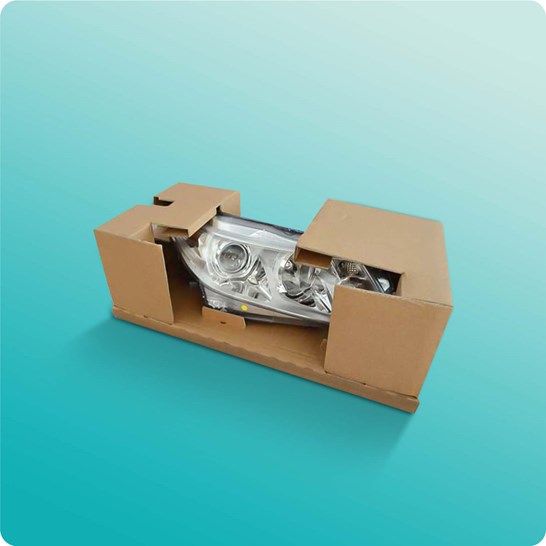Eco-Friendly Practices: Driving Change with Bulk Container Recycling
Eco-Friendly Practices: Driving Change with Bulk Container Recycling
Blog Article
Reliable Industrial Recycling Solutions for Sustainable Product Packaging: A Comprehensive Overview
That's where this detailed guide on reliable commercial recycling solutions for sustainable packaging comes in. By checking out essential areas such as packaging product choice, designing for recyclability, applying recycling infrastructure, teaming up with recycling companions, and tracking and gauging recycling success, this overview will furnish you with the knowledge and tools necessary to make educated decisions and drive favorable change within your company. Whether you're a packaging specialist, sustainability manager, or merely interested in the topic, this guide will certainly offer valuable insights and approaches to help you browse the world of lasting product packaging.
Product Packaging Product Selection
The selection of packaging products plays a crucial function in making certain the sustainability of commercial reusing options. When it involves sustainable packaging, the choice of materials is type in lessening ecological influence and taking full advantage of recycling effectiveness. Selecting the right products can help in reducing waste generation, preserve resources, and promote a circular economy.
Products like cardboard, paper, glass, and specific kinds of plastics can be recycled numerous times without losing their top quality. On the other hand, products that are difficult to reuse, such as mixed plastics or non-recyclable compounds, can produce challenges for the reusing process and might finish up in garbage dumps or burners.
An additional consideration is using eco-friendly and naturally degradable materials. Packaging made from renewable energies, such as plant-based plastics or biopolymers, can help in reducing reliance on fossil gas and reduce environment change. Furthermore, eco-friendly products break down naturally in time, lowering the accumulation of waste in landfills.
In addition, the weight and volume of packaging materials must be reduced to reduce transportation expenses and power intake. Light-weight materials not only need less sources throughout production yet also add to reduce carbon discharges during transport.
Creating for Recyclability
Packaging designers need to focus on the usage of products that are extensively accepted for recycling and have developed recycling infrastructures. Products such as glass, light weight aluminum, and particular types of plastic, like PET and HDPE, are typically recycled and should be preferred over products that are costly or hard to reuse.
One more vital consideration in designing for recyclability is the removal of unneeded components or products. By lessening the number of layers, layers, and additional parts, packaging can be made less complex and much easier to reuse. Furthermore, designers need to aim to reduce making use of combined products, as they can complicate the recycling process.

Implementing Recycling Framework
Effective execution of recycling facilities is essential for the success of industrial recycling remedies. Without correct infrastructure in position, the reusing procedure becomes inadequate and inefficient, preventing the total goal of sustainable product packaging.
To implement recycling framework properly, a number of essential aspects need to be thought about. To start with, there must be an efficient collection system that helps with the splitting up and collection of recyclable materials. This can consist of useful source designated recycling bins in public areas, along with collaborations with waste management companies for curbside pickup and sorting.
When accumulated, the recyclable products need to be moved to recycling facilities in a timely manner. This calls for reliable logistics and transport networks, making certain that the materials reach the suitable centers right away.
At the reusing centers, progressed sorting and handling technologies ought to be in place to separate different sorts of materials effectively. This includes using automated sorting machines, optical scanners, and manual sorting techniques.
Additionally, there ought to be a robust market need for recycled materials. This can be achieved via cooperations with makers and industries that use recycled products in their production processes. Creating a secure market for recycled materials incentivizes the reusing sector and advertises the circular economy.
Working Together With Recycling Partners

One key element of teaming up with recycling partners is the facility of clear communication networks. It is important to develop open lines of interaction to help with the exchange of information, updates, and responses. This allows both events to remain informed regarding the progression of recycling campaigns and deal with any kind of difficulties or issues that may develop.
Additionally, partnership can involve joint initiatives in developing and executing reusing programs. Recycling partners can provide useful insights and advice in establishing reliable collection systems and figuring out one of the most appropriate recycling modern technologies. By working together, organizations and recycling companions can optimize the reusing procedure and reduce waste.
In addition, collaboration can extend past the functional aspects of reusing. It can likewise include campaigning for and education and learning efforts. By signing up with forces, businesses and reusing companions can increase awareness regarding the importance of reusing and promote the fostering of lasting packaging methods amongst web link consumers and other stakeholders.
Tracking and Measuring Recycling Success
To make sure the efficiency of commercial reusing remedies and the achievement of sustainable packaging goals, it is crucial for companies and their recycling partners to establish a detailed system for tracking and gauging recycling success (bulk container recycling). Tracking and gauging reusing success allows services to examine the influence of their reusing initiatives, determine areas for enhancement, and established purposeful targets for future progression
One method to track recycling success is with making use of data collection and evaluation tools. By gathering data on the amount of packaging waste created, the percentage of waste that is recycled, and the types of products being reused, organizations can obtain important understandings into their recycling performance. This information can after that be analyzed to identify fads, patterns, and locations of ineffectiveness.
One more essential aspect of tracking and gauging reusing success is establishing standard and clear metrics. This allows companies to compare their efficiency against industry standards and track their progress in time. Metrics such as recycling rates, waste diversion rates, and greenhouse gas discharges can supply a measurable measure of an organization's recycling success.

Conclusion
Finally, applying efficient industrial recycling solutions for lasting packaging requires mindful factor to consider of product packaging material option, creating for recyclability, implementing reusing infrastructure, working together with reusing companions, and monitoring and determining recycling success. By including these methods, organizations can add to a more lasting and environmentally-friendly method to product packaging, lowering waste and advertising the round economic situation.
By exploring crucial locations such as packaging material choice, creating for recyclability, carrying out recycling framework, working together with reusing companions, and tracking and measuring recycling success, this overview will outfit you with the expertise and devices needed to make enlightened choices and drive favorable change within your company. Packaging developers must focus on the use of materials that are extensively accepted for recycling and have actually developed recycling facilities.Cooperation with reusing partners is important for the effective execution of commercial recycling solutions and the accomplishment of lasting packaging goals. By joining pressures, organizations and reusing partners can increase understanding concerning the importance of recycling and promote the adoption of sustainable product packaging methods hop over to these guys amongst customers and various other stakeholders.
By accumulating data on the amount of packaging waste generated, the percentage of waste that is recycled, and the types of materials being recycled, companies can get useful understandings right into their reusing performance.
Report this page